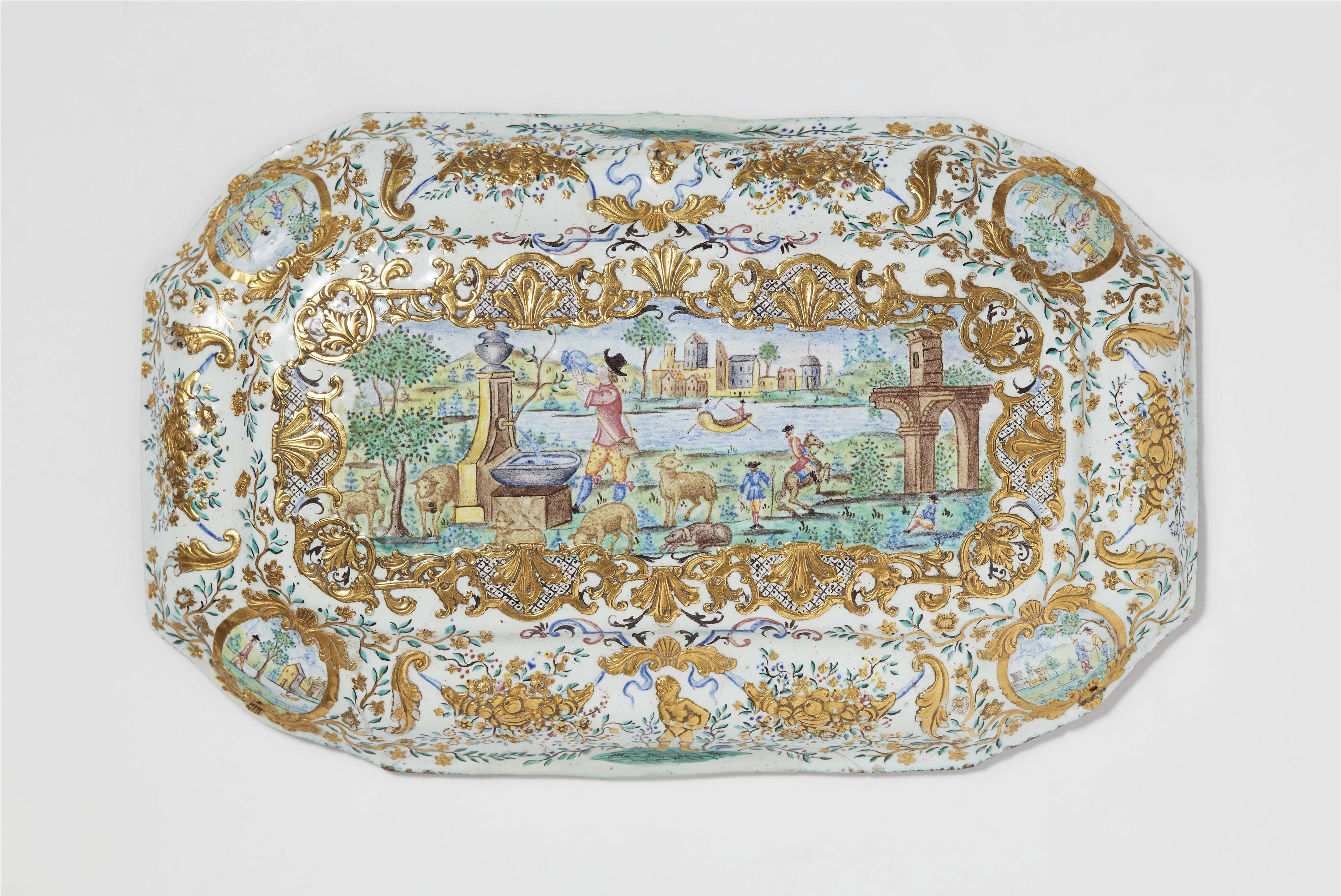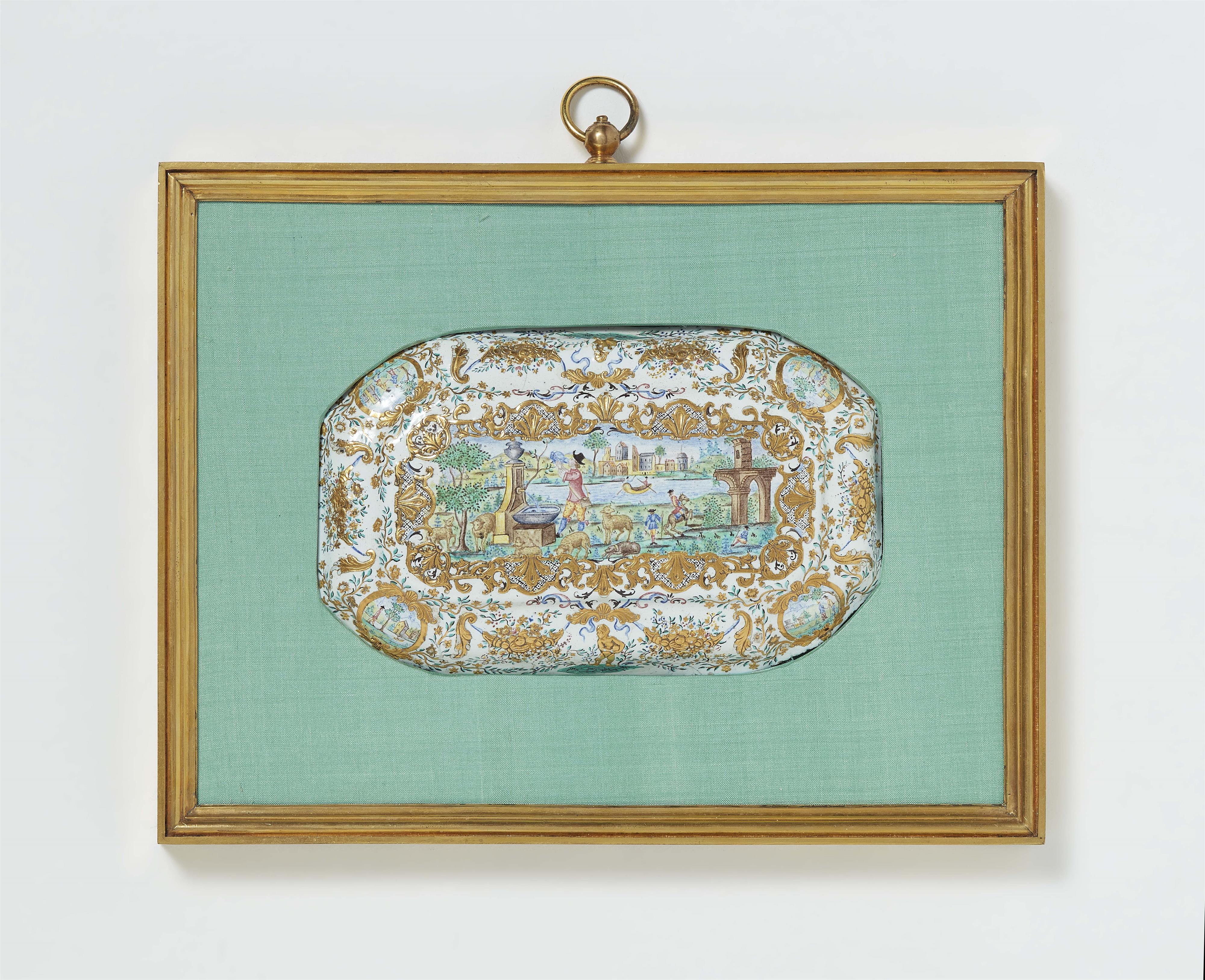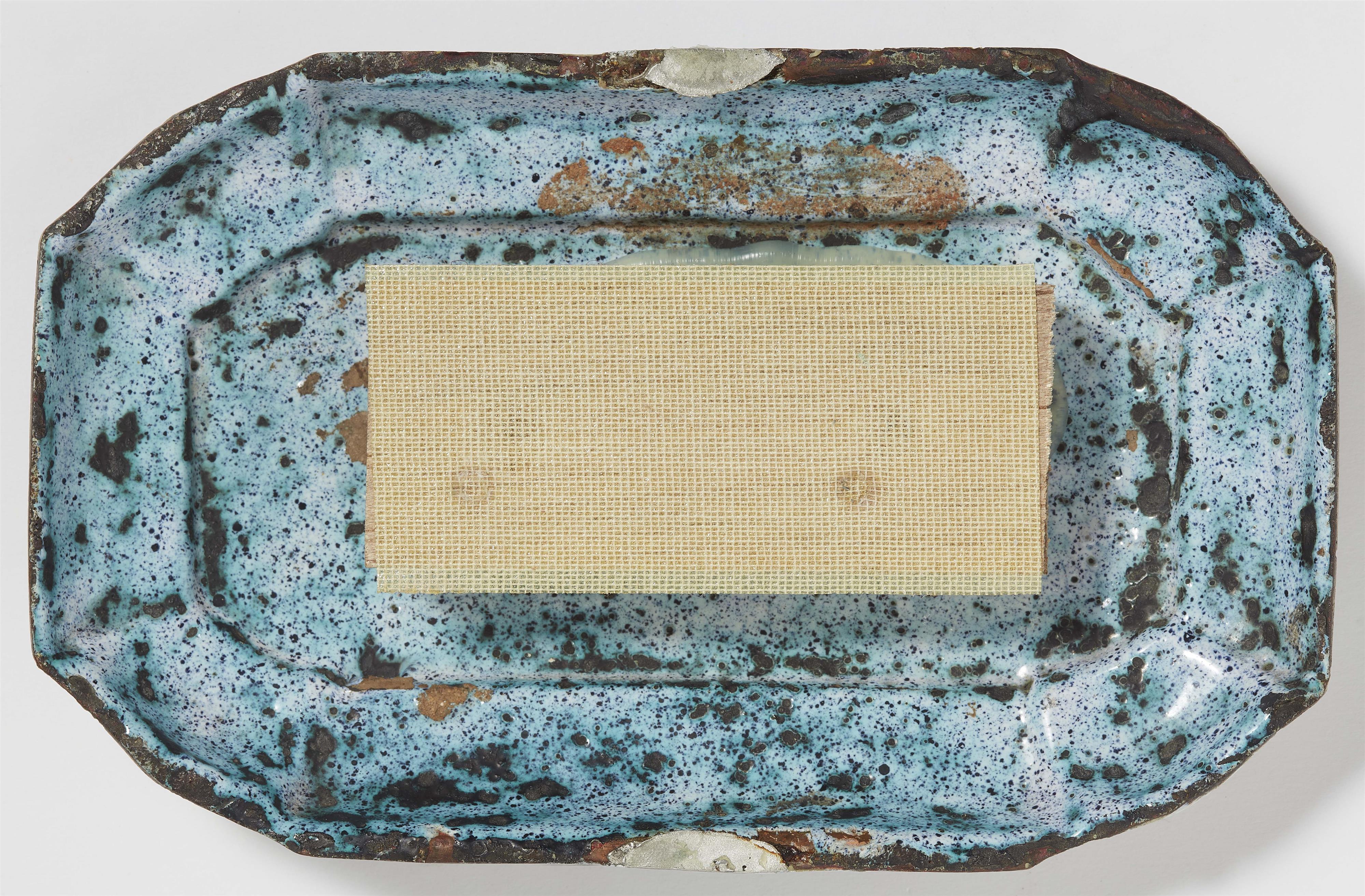An important "émail de saxe" box lid
Polychrome and white enamel, relief gilding and pale blue and white counter enamel. Slightly domed oblong plaque decorated with figures in a garden framed by palmettes and scrolls. The corners with four similar smaller landscapes amid fruit garlands in relief. W 15.1, D 9.8 cm. Mounted with a magnet in a gilt brass surround, H 18, W 23.6 cm.
Berlin, attributed to the workshop of Pierre Fromery, 1720s, decor attributed to Christian Friedrich Herold.
The polychrome enamel boxes of the Fromery manufactory were among the most famous products produced in Berlin during the 18th century and were distributed throughout Europe. The Berlin-born painter Christian Friedrich Herold, who worked for the Meissen porcelain manufactory, also decorated boxes for Fromery. The Meissen manufactory authorities were none too pleased with this lucrative side business, however, as Herold would occasionally steal purple pigment from their workshops to use on Fromery's boxes, a misdemeanor for which he was punished with jail time. Pierre Fromery (1679 - 1738) was originally a goldsmith, but then specialized in the production of enamelled and gilded copper and established a large distribution of fancy goods (such as hair brushes, tobacco boxes, and flasks), which was taken over by his son Alexander after his death. Numerous identical box lids have been preserved. Fromery sold them individually, unmounted, to be used as lids for silver or vermeil boxes or as back panels for brushes.
Literature
Cf. Weinhold, Emailmalerei an Augsburger Goldschmiedearbeiten von 1650 bis 1750, Munich-Berlin 2000, p. 157 ff, illus. 125, 129, 130.






